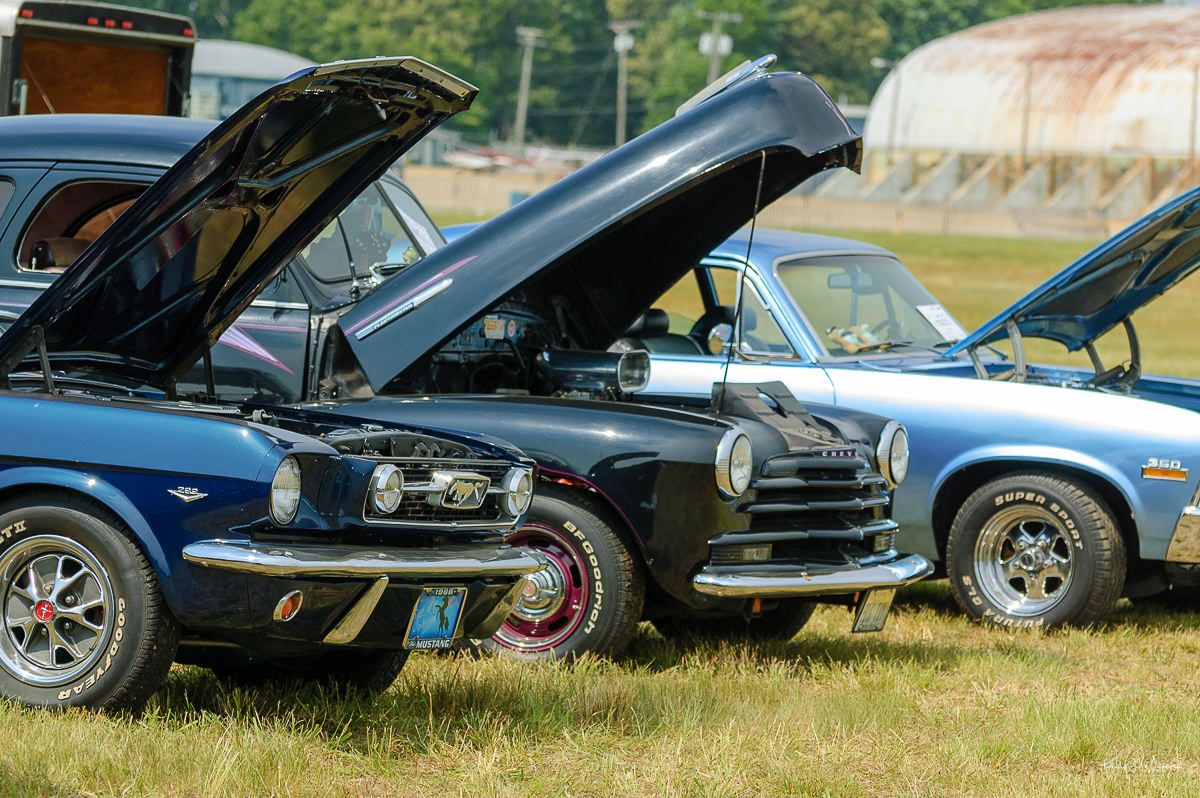
Step into a world where power, prestige, and history converge on four wheels – and sometimes, two or even none at all! State carriages are more than just modes of transport; they are rolling symbols of national identity, historical continuity, and, often, cutting-edge security. From opulent classic cars that glide through parades to heavily armored behemoths designed to withstand any threat, these vehicles tell fascinating tales of the leaders they carry and the nations they represent.
For centuries, the movement of heads of state and dignitaries has been a spectacle, a carefully choreographed display of authority and tradition. In an age where global connectivity is instantaneous, the choice of a state car still speaks volumes, blending engineering marvel with cultural homage. It’s a fascinating intersection of past and present, where horsepower meets heritage, and a simple ride becomes a profound statement.
Join us on an exploratory journey across continents, delving into the extraordinary machines that have transported some of the world’s most influential figures. We’ll unearth the unique quirks, the rich historical contexts, and the sheer audacity of these remarkable conveyances, each with its own story, waiting to be discovered.

1. **Argentina’s Presidential Vehicles and Milei’s Eclectic Collection**The presidential transport in Argentina offers a captivating glimpse into the blend of official pragmatism and personal flair. For daily duties, we see President Javier Milei utilizing a robust Toyota Fortuner, a choice that emphasizes practicality and modern reliability for the demanding landscapes of presidential travel. It’s a stark contrast to some of the more overtly luxurious or symbolically weighted vehicles seen in other nations, reflecting perhaps a more grounded approach to everyday governance.
Yet, the narrative deepens when we consider the broader history of Argentine presidential transport. Former President Cristina Fernández de Kirchner, for instance, was seen navigating to Casa Rosada in a Volkswagen CC after assuming her second term in 2011, a choice that blended executive comfort with a degree of understated elegance. Meanwhile, Mauricio Macri opted for the stately presence of an Audi A8L, showcasing a preference for German engineering and discreet luxury, often favored by world leaders for its blend of performance and prestige.
However, it is President Milei’s personal garage that truly ignites the imagination, offering an Atlas Obscura-esque dive into the man behind the office. Beyond his official transport, Milei is noted to have a “small car collection” that includes a fascinating array: a vintage 1961 Cadillac DeVille, a sporty 1988 Mazda MX-5 Miata, and his distinctive Peugeot RCZ. This collection is a rare peek into the private passions of a head of state, demonstrating an appreciation for automotive history and individual taste that transcends the strictures of official protocol.
The 1961 Cadillac DeVille, in particular, harks back to an era of American automotive grandeur, evoking images of classic elegance and mid-century design. Its presence in a presidential collection underscores a reverence for historical automobiles, offering a fascinating counterpoint to the more utilitarian demands of state travel. Such personal choices, though not for official duties, nonetheless paint a richer picture of the figures who lead nations, revealing their unique connections to the machines that move them.
2. **Australia’s Regal Rolls-Royce Phantom VI**Australia, a constitutional monarchy, beautifully balances traditional reverence with modern efficiency in its state transport, especially notable in the vehicles reserved for its Governor-General. For the most solemn and significant occasions, a true emblem of regal continuity takes center stage: the Rolls-Royce Phantom VI. This magnificent automobile serves as the ceremonial car for the Governor-General, currently Sam Mostyn, and its very presence evokes centuries of tradition and understated majesty.
This isn’t just any luxury car; it’s a moving piece of history, reserved exclusively for “ceremonial occasions.” Its stately lines and imposing grille speak to a bygone era of craftsmanship and opulence, making it a perfect vessel for formal events. The Phantom VI’s role is to add a distinct layer of solemnity and grandeur to national events, a powerful visual link to the Crown it represents.
Adding to its unique identity, the ceremonial Rolls-Royce proudly displays a “Tudor Crown instead of number plates,” a direct visual reference to its association with the monarch. This symbolic detail instantly communicates the vehicle’s special status, setting it apart from all other road-going conveyances. Furthermore, the official cars of the governor-general consistently “fly the flag of the governor-general,” an additional layer of protocol that visually declares the presence of the vice-regal representative.
In practical contrast to this historical marvel, the Governor-General also utilizes a “white armoured BMW 7 series” for “official business.” This modern, secure vehicle reflects the contemporary realities of security and swift movement required for daily duties. Yet, it is the venerable Rolls-Royce Phantom VI that truly captures the imagination, serving as a splendid testament to Australia’s deep appreciation for its heritage and the enduring power of ceremonial display.
Car Model Information: 2019 Volkswagen Atlas 3.6L SE
Name: Rolls-Royce Phantom VI
Manufacturer: Rolls-Royce Limited
Production: 1968–1990,374 produced
Assembly: West Sussex,England
BodyStyle: Limousine
Related: Rolls-Royce Silver Shadow
Layout: FR layout
Engine: Rolls-Royce V8 engine,Rolls-Royce V8 engine
Wheelbase: 145 in
Abbr: on (approx.)
Length: 238 in
Width: 79 in
Height: 69 in
Weight: 2.5 t
Predecessor: Rolls-Royce Phantom V
Successor: Rolls-Royce Silver Spirit#Touring limousines
Caption: House of Bolkiah
Categories: 1970s cars, 1980s cars, 1990s cars, All articles needing additional references, All articles with unsourced statements
Summary: The Rolls-Royce Phantom VI is a British limousine made from 1968 to 1990 by Rolls-Royce. A total of 374 Phantom VIs were made, of which fewer than 40 were manufactured in the last decade of production.
The exterior is almost identical to the facelifted Phantom V.
Get more information about: Rolls-Royce Phantom VI
Buying a high-performing used car >>>
Brand: Rolls-Royce Model: Phantom VI
Price: $15,988 Mileage: 72,895 mi.
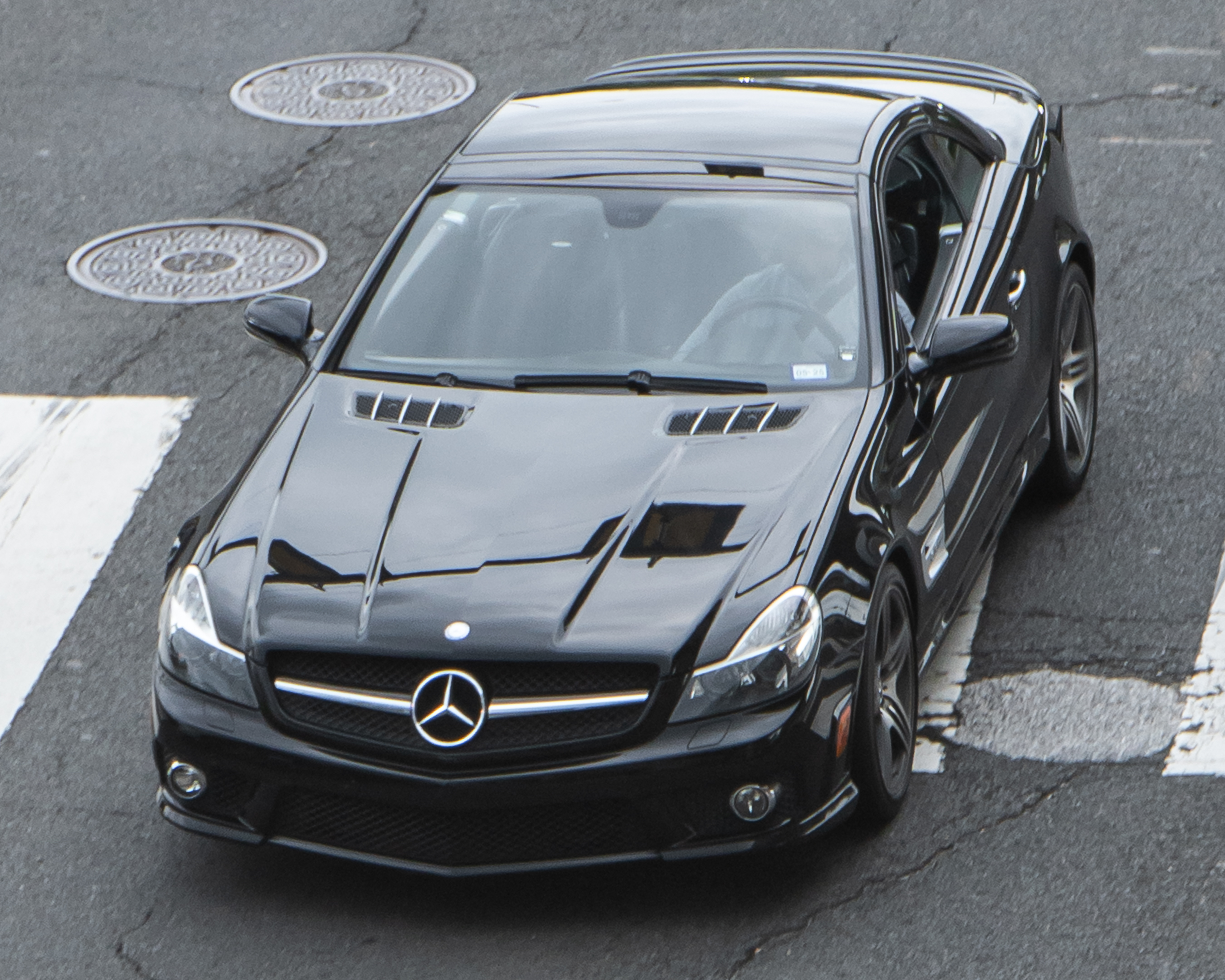
3. **Azerbaijan’s Imposing Mercedes-Benz W222 S600 Guard Pullman**When it comes to presidential transport, the blend of ultimate luxury and unassailable security often defines the pinnacle of state cars. Azerbaijan’s President Ilham Aliyev exemplifies this with a formidable fleet that includes the truly extraordinary “heavy armored custom-built Mercedes-Benz W222 S600 Guard Pullman.” This vehicle is not merely a car; it is a fortress on wheels, meticulously engineered to provide the highest level of protection available in a civilian vehicle, embodying an unyielding commitment to presidential safety.
Before the majestic Pullman, President Aliyev was also seen in an “armored Maybach 62,” a vehicle synonymous with ultra-luxury and, even in its standard form, an impressive statement of executive power. The transition to the Mercedes-Benz S600 Guard Pullman signifies a further escalation in both security capabilities and the sheer grandeur of the presidential motorcade. The term ‘Pullman’ refers to an extended wheelbase variant, offering unparalleled interior space, allowing the head of state to travel in spacious comfort even within a heavily fortified shell.
The Mercedes-Benz S600 Guard Pullman is built to an exacting standard, often BR7-level armor, capable of withstanding various ballistic and explosive threats. Every panel, every pane of glass, and every structural component is reinforced, transforming the elegant S-Class into a mobile command center and sanctuary. Its imposing presence on the road is undeniable, reflecting the seriousness with which the security of the nation’s leader is approached.
In a more recent development that highlights national advancement, President Aliyev has also been associated with a “Togg T10X,” showcasing a shift towards domestic manufacturing and potentially future-oriented automotive choices. This diverse fleet, from the historic “Mercedes-Benz S-Class of the Azerbaijani president in 2015” to the custom Pullman and new national electric vehicles, underscores a multifaceted approach to presidential mobility, balancing tradition, paramount security, and national pride.
Car Model Information: 2022 BMW X3 sDrive30i
Name: Mercedes-Benz S-Class
Manufacturer: ubl
Production: 1954–present (S-Class nomenclature adopted since 1972)
Class: Full-size luxury car
BodyStyle: Sedan (car)
Related: Mercedes-Benz CL-Class,Mercedes-Benz CLS-Class,Mercedes-Benz SL-Class
Predecessor: Mercedes-Benz W187
Categories: 1980s cars, 1990s cars, 2000s cars, 2010s cars, 2020s cars
Summary: The Mercedes-Benz S-Class, formerly known as “special class” (German: “Sonderklasse”, abbreviated as “S-Klasse”), is a series of full-sized luxury sedans and coupés produced by the German automaker Mercedes-Benz. The S-Class is the designation for top-of-the-line Mercedes-Benz models and was officially introduced in 1972 with the W116, and has remained in use ever since. The S-Class is the flagship vehicle for Mercedes-Benz, being positioned above the other Mercedes-Benz models.
The S-Class has debuted many of the company’s latest innovations, including drivetrain technologies, interior features, and safety systems (such as the first seatbelt pretensioners). The S-Class has ranked as the world’s best-selling luxury sedan. In automotive terms, Sonderklasse refers to “a specially outfitted car.” Although used colloquially for decades, following its official application in 1972, six generations of officially named S-Klasse sedans have been produced.
In 1981, the two-door, four-seat S-Class, designated as SEC, was introduced, sharing the petrol V8 engines with its four-door version, W126. After the introduction of a new nomenclature scheme, SEC was simply renamed as S-Class Coupé. For the 1996 model year, the coupé was separated from the S-Class line and named as new CL-Class (in line with other two-door models: CLK, SL, and SLK); however, the CL-Class was reintegrated into the S-Class model line (same with CLK becoming E-Class Coupé and Cabriolet). The first-ever S-Class convertible since 1972, internally named A217, was introduced and became a one-generation model only. After the end of W222 production in 2020, the successors to the C217 coupé and A217 convertible are not planned, citing the low demand for those models and stronger demand for SUV models.
Get more information about: Mercedes-Benz S-Class
Buying a high-performing used car >>>
Brand: Mercedes-Benz Model: W222 S600 Guard Pullman
Price: $28,452 Mileage: 46,868 mi.
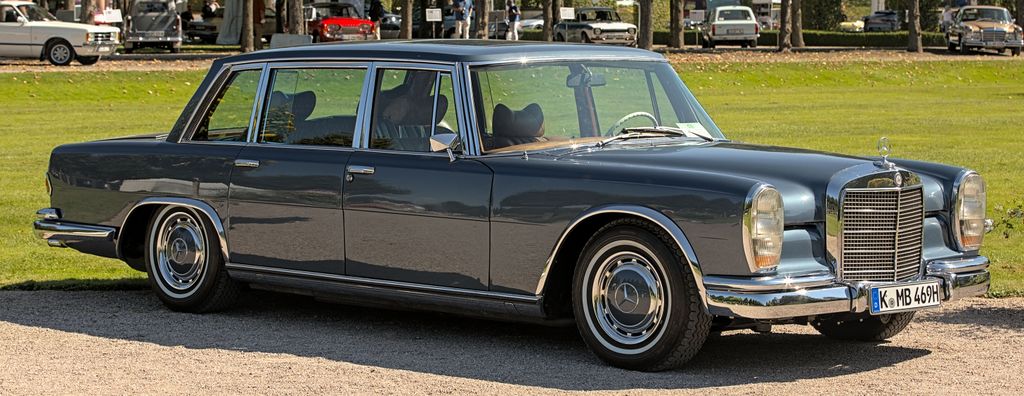
4. **Bahrain’s Grand Mercedes-Benz 600 Landaulette**The Kingdom of Bahrain, under the leadership of King Hamad bin Isa Al Khalifa, provides another exquisite example of how state transport can blend contemporary efficiency with timeless elegance, especially for ceremonial duties. While the King utilizes a “red extended Mercedes-Benz S-Class (W221)” for daily movements, a choice that signifies modern executive luxury and security, it is a particular classic that truly shines during public appearances.
The star of Bahrain’s ceremonial fleet is the “Mercedes-Benz 600 Landaulette.” The Mercedes-Benz 600 series, famously known as the ‘Grosser Mercedes,’ is a legendary vehicle in its own right, revered for its engineering sophistication and immense prestige. A Landaulette variant, with its convertible rear roof section, allows the monarch to be visible to crowds during parades and state functions, adding a profoundly personal touch to royal processions. This open-top feature transforms a mere journey into a public spectacle, fostering a direct connection between the ruler and the people.
To witness the King gliding through the streets in such a distinctive automobile is to observe a living piece of automotive history. The 600 Landaulette, originally produced from the 1960s into the 1980s, embodies an era of unparalleled craftsmanship and luxury, its majestic silhouette commanding respect. Its continued use for ceremonial purposes in Bahrain speaks volumes about the enduring value placed on tradition and the spectacle of monarchy.
Supporting the royal motorcade, a diverse array of robust vehicles ensures seamless operations and security. These include reliable “Toyota Land Cruiser” models for rugged terrain or varied transport needs, alongside sophisticated “BMW 7 Series” and “Nissan Patrol” vehicles, which provide a capable backdrop to the ceremonial grandeur. This comprehensive fleet ensures that whether the King is engaged in official duties or participating in a celebratory parade, his transport is always appropriate, secure, and befitting his stature.
Car Model Information: 2020 BMW X3 xDrive30i
Categories: All articles with dead external links, All articles with unsourced statements, Armoured vehicles, Articles with dead external links from July 2025, Articles with dead external links from June 2021
Summary: An official state car is an automobile used by a government to transport its head of state or head of government in an official capacity, which may also be used occasionally to transport other members of the government or visiting dignitaries from other countries. A few countries bring their own official state car for state visits to other countries, for instance, the United States, Russia, the United Kingdom, South Korea, Germany and Japan. It also may serve as an automotive symbol of the head of state and their country. An official state car must have adequate security, capability and stateliness for its duty. A limousine or other high-end vehicle is usually selected.
Due to the high security risk of the passengers, these vehicles are often heavily secured and protected. Vehicles may be armored by the manufacturer or an after-market specialist. In this article the term “armored car” invariably means a reinforced civilian vehicle, not a military vehicle. When carrying an important passenger, state vehicles may be surrounded by a motorcade consisting of police or military personnel. The vehicle’s driver might also be from the law enforcement or military pool. The driver of the United States presidential state car is an experienced agent from the Secret Service, the British prime minister is driven by a Specialist Protection officer from the Metropolitan Police Service, and the Canadian prime minister is driven by a Protective Services officer from the RCMP.
In some cases state cars may bear standard number plates; in others special or no plates are used.
Get more information about: Official state car
Buying a high-performing used car >>>
Brand: Mercedes-Benz Model: 600 Landaulette
Price: $26,485 Mileage: 40,004 mi.
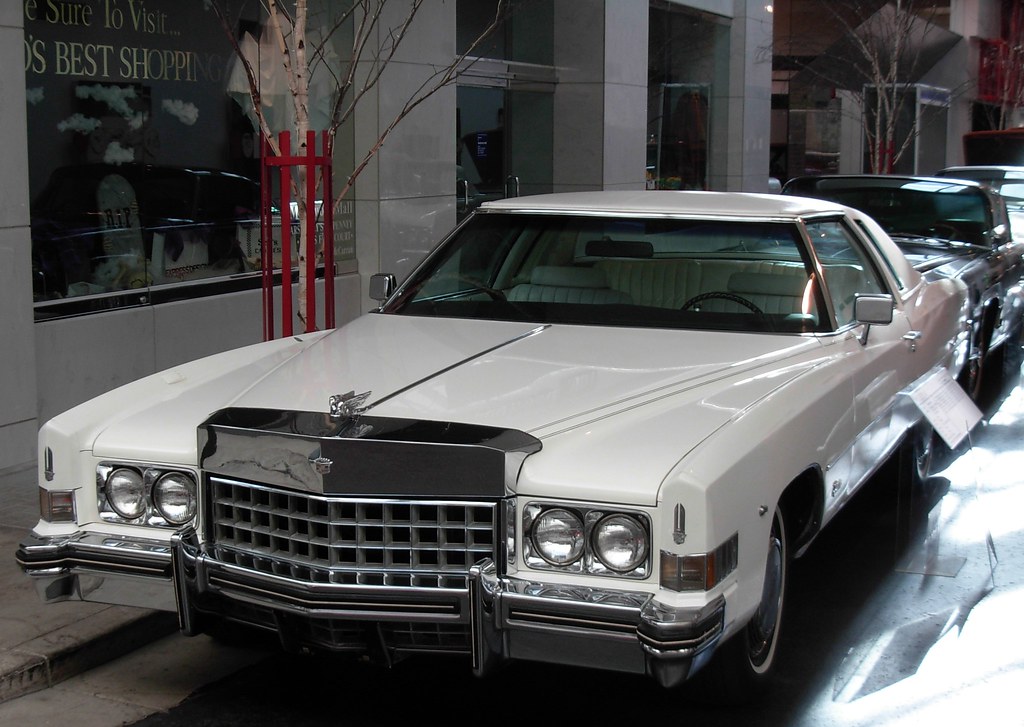
5. **Belgium’s Iconic Bulletproof Bubble-Top Cadillac**The history of Belgian royal transport is rich with intriguing vehicles, perfectly illustrating the evolution of both luxury and security for heads of state. While King Philippe today is often seen in a modern “Mercedes-Benz S-Class or a BMW 7 Series,” reflecting current standards for comfort and protection, and even used a “Mercedes-Benz 600 landaulette” for his inauguration, a remarkable vehicle from the past truly captures the imagination of any automotive enthusiast or historian.
Undoubtedly, one of the most unique and visually striking state cars in Belgian history belonged to King Baudouin and Queen Fabiola: a “1955 Cadillac Series 62 Convertible, with a bulletproof bubble-top.” This extraordinary vehicle stands as a testament to the mid-20th century’s blend of extravagant automotive design and burgeoning security concerns. The idea of a convertible with a fixed, protective bubble canopy is a rare innovation, transforming a leisure car into a secure, yet highly visible, royal carriage.
The bulletproof bubble-top itself is a fascinating piece of engineering, designed to offer protection while still allowing the royal couple to be seen and greeted by the public. It represented a sophisticated solution for dignitary protection during an era that increasingly demanded it, without sacrificing the traditional open-air feel of a parade car. The 1955 Cadillac Series 62 Convertible, an icon of American automotive styling, was elevated to a symbol of Belgian royalty through this distinctive modification.
This particular Cadillac is a vivid example of how nations adapt and customize vehicles to meet their specific needs, whether for security, tradition, or public engagement. Its historical significance lies not only in its association with King Baudouin and Queen Fabiola but also in its pioneering approach to royal security, making it a compelling piece of a broader narrative about global state transport. It remains a memorable symbol of an era where innovation and grandeur often converged in unexpected ways.
Car Model Information: 2020 BMW X3 xDrive30i
Spell: in
Adj: Stanley Motor Carriage Company,steam car
Categories: All Wikipedia articles written in American English, All articles containing potentially dated statements, All articles lacking reliable references, All articles with incomplete citations, All pages needing factual verification
Summary: The United States presidential state car (nicknamed “the Beast”, “Cadillac One”, “First Car”; code named “Stagecoach”) is the official state car of the president of the United States.
United States presidents embraced automotive technology in the early 20th century with President William Howard Taft’s purchase of four cars and the conversion of the White House stables into a garage. Presidents rode in stock, unmodified cars until President Franklin D. Roosevelt’s administration bought the Sunshine Special, the first presidential state car to be built to United States Secret Service standards. Until the assassination of John F. Kennedy, presidential state cars frequently allowed the president to ride uncovered and exposed to the public. President Kennedy’s assassination began a progression of increasingly armored and sealed cars; the 2009–2018 state car had five-inch (130 mm) bulletproof glass and was hermetically sealed with its own environmental system. Since 2018 the presidential state car has been a custom-built Cadillac.
Decommissioned presidential state cars are destroyed by the Secret Service for training and to protect their secrets. Late 20th-century and 21st-century presidential motorcades have consisted of 24–45 vehicles other than the presidential state car, including those for security, healthcare, the press, and route-clearing, among others.
The first
president to ride in a car was President William McKinley, who briefly rode in a Stanley Motor Carriage Company steam car on July 13, 1901. According to the United States Secret Service, it was customary for them to follow the presidential horse-and-buggy on foot, but that with the popularization of the automobile, the Secret Service purchased a 1907 White Motor Company steam car to follow President Theodore Roosevelt’s horse-drawn carriage. Roosevelt avoided riding in the vehicle due to his “image as a rough-riding horseman”.
Get more information about: Presidential state car (United States)
Buying a high-performing used car >>>
Brand: Cadillac Model: Bulletproof Bubble-Top
Price: $26,485 Mileage: 40,004 mi.

6. **Brazil’s Timeless Rolls-Royce Silver Wraith and Modern Fleet**Brazil’s presidential transport beautifully encapsulates a nation’s reverence for tradition while embracing the demands of modern leadership. At the heart of its ceremonial grandeur is an iconic classic: the “1952 Rolls-Royce Silver Wraith.” This majestic vehicle is not just a car; it’s a cherished national artifact, “exclusively for Independence Day, state visits and the presidential inauguration,” making it a poignant symbol of enduring statehood and the transfer of power.
To see President Luiz Inácio Lula da Silva riding in the Silver Wraith, as former President Dilma Rousseff did during the Independence Day parade in 2012, is to witness a profound connection to Brazil’s past. The Silver Wraith, with its dignified presence and classic British elegance, stands as a testament to the stability and historical depth of the Brazilian republic. It serves as a reminder that amidst rapid global change, certain symbols retain their timeless significance, anchoring the present to the heritage that forged it.
For the practicalities of daily governance, however, President Lula da Silva relies on a far more contemporary machine: a “2019-model armored Ford Fusion Hybrid.” This choice signals a commitment to both security and environmental consciousness, utilizing modern technology for the demanding routine of presidential duties. The Fusion, first deployed as early as June 2008, demonstrates an evolution in the official state car, moving towards more agile and technologically advanced solutions for the federal government’s most important officials.
The Brazilian fleet also showcases adaptability for various engagements, including a “convertible Volkswagen Virtus (made for the Brazilian president visit to Volkswagen’s factory in São Bernardo do Campo).” This bespoke vehicle highlights the unique occasions that call for specialized transport, fostering direct engagement with industry. Additionally, officials’ cars are distinguished by “yellow-green brass plates with the coat of arms of Brazil and their titles,” a detail that further underscores their official capacity and national pride. The versatility of vehicles like the Mitsubishi Outlander also plays a role in the broader governmental car pool, illustrating a comprehensive approach to official mobility.
Car Model Information: 2020 BMW X3 xDrive30i
Name: Rolls-Royce Silver Wraith
Caption: Hooper (coachbuilder)
Manufacturer: Rolls-Royce Limited
Predecessor: Rolls-Royce Wraith (1938)
Successor: Rolls-Royce Silver Cloud
Production: 1946–1958,1.883 produced (incl. 639 LWB cars)
Related: Rolls-Royce Silver Dawn
Class: Full-size car,luxury car
BodyStyle: Mostly 4-door saloons, but other body styles were erected on this chassis.
Layout: Front-engine, rear-wheel-drive layout
Engine: 4.3 L
Abbr: Straight-six engine
Transmission: Manual transmission,Hydramatic
Wheelbase: 3225.8 mm (127 in) (1946–1953),3378.2 mm (133 in) (1951–1958)
Assembly: Crewe, Cheshire,England
Categories: 1950s cars, All Wikipedia articles written in British English, Articles with short description, CS1 errors: external links, Cars discontinued in 1958
Summary: The Rolls-Royce Silver Wraith was the first post-war Rolls-Royce. It was made from 1946 to 1958 as only a chassis at the company’s Crewe factory, its former Merlin engine plant, alongside the shorter Bentley Mark VI. The Bentley was also available as a chassis for coachbuilders, but for the first time could be bought with a Rolls-Royce built Standard Steel body. The use of the name “wraith” coincided with the established tradition of naming models after “ghosts”.
It was announced by Rolls-Royce in April 1946 as the 25/30 hp replacement for the 1939 Wraith in what had been their 20 hp and 20/25 hp market sector, that is to say Rolls-Royce’s smaller car. The size was chosen to be in keeping with the mood of post-war austerity. Even very limited production of the chassis of the larger car, the Phantom IV, was not resumed until 1950 and then, officially, only for Heads of State.
Improvements announced were: chromium-plated cylinder bores for the engine; a new more rigid chassis frame to go with new independent front suspension; and a new synchromesh gearbox. Chassis lubrication was now centralised.
Get more information about: Rolls-Royce Silver Wraith
Buying a high-performing used car >>>
Brand: Rolls-Royce Model: Silver Wraith
Price: $26,485 Mileage: 40,004 mi.

7. **Chile’s Traditional ‘Bandeja’ Carriage and Ford Galaxie**Chile offers a truly captivating blend of ancient tradition and mid-century Americana in its ceremonial state transport, providing a fascinating study in cultural continuity. Leading this unique array is the “horse drawn ‘Bandeja’ Carriage,” utilized by President Gabriel Boric for ceremonial occasions. In an age dominated by advanced automotive engineering, the sight of a head of state arriving in a horse-drawn carriage is a powerful and evocative nod to a bygone era, connecting the present leadership directly to the earliest forms of dignitary travel.
This ‘Bandeja’ Carriage is far more than a simple antique; it is a living symbol of Chile’s deep historical roots and its enduring respect for traditional pageantry. Its use for ceremonial purposes speaks to a national identity that cherishes its past, offering a visual spectacle that combines the grace of equine power with the solemnity of state events. Such a choice ensures that moments of national significance are imbued with a profound sense of history and grandeur, resonating deeply with citizens.
Complementing this equestrian grandeur is another remarkable historical vehicle: the “1966 Ford Galaxie XL.” This classic American automobile has held a distinguished position, serving as “Chile’s ceremonial presidential car since 1970.” The Galaxie, with its distinct styling and robust presence, has witnessed decades of presidential inaugurations and national celebrations, becoming an iconic fixture in Chilean public life. Its long tenure as a ceremonial vehicle underscores its symbolic importance, bridging generations of leadership.
For the rigors of daily presidential duties, a starkly modern and secure vehicle is employed: an “armored Chevrolet Tahoe Z71.” This choice reflects the contemporary imperatives of security and functionality, providing President Boric with a reliable and protected means of transportation for his routine engagements. The juxtaposition of a horse-drawn carriage, a classic Ford Galaxie, and a modern armored SUV in one nation’s presidential fleet offers an unparalleled insight into how different eras of transport can coexist, each fulfilling a vital role in the intricate dance of statecraft.
The Evolution of Power: Unveiling Seven More Unforgettable State Cars, Highlighting Modern Security, Unexpected Choices, and the Enduring Legacy of Dignitary Transport
As we continue our exploration into the fascinating world of dignitary transport, we move beyond the foundational vehicles to uncover further layers of ingenuity, symbolism, and sometimes, sheer extravagance. This next chapter reveals how nations adapt, innovate, and even make peculiar selections to ensure their leaders are not just moved, but meaningfully presented. From armored fortresses to eco-conscious choices and vehicles steeped in unique historical narratives, these machines tell us even more about the states they represent and the figures who command them.
Car Model Information: 1961 Ford Galaxie Starliner
Name: Ford Galaxie
Caption: 1963 Ford Galaxie 500 4-Door Sedan
Manufacturer: Ford Motor Company
Production: 1958–1974 (United States),1964–1968 (Australia),1967–1983 (Brazil)
ModelYears: 1959–1974
Assembly: Homebush West,Australia,São Paulo,Brazil
Class: Full-size
Layout: FR layout
Predecessor: Ford Fairlane (Americas)
Successor: Ford LTD (Americas)
Categories: 1960s cars, 1970s cars, All articles with unsourced statements, Articles with short description, Articles with unsourced statements from February 2010
Summary: The Ford Galaxie is a full-size automobile that was sold by the Ford Motor Company in North America from the 1959 to 1974 model years. Deriving its nameplate from a marketing tie-in with the excitement surrounding the Space Race, the Galaxie was offered as a sedan within the full-size Ford range throughout its production run. In the full-size segment, the model line competed against the Chevrolet Impala and Plymouth Fury.
The model line was assembled by Ford in multiple sites across the United States; four generations of the model line were produced. The Galaxie was also produced locally by Ford Australia and Ford Brasil, adopting commonality from the third-generation 1965 design.
Get more information about: Ford Galaxie
Buying a high-performing used car >>>
Brand: Ford Model: Galaxie
Price: $49,997 Mileage: 65,447 mi.

8. **China’s Hongqi Limousines and Evolving Diplomacy**China’s approach to state transport is a powerful declaration of national ambition and self-reliance, encapsulated by the majestic Hongqi N701 limousine. This custom-built vehicle, alongside the Hongqi L5, stands as a formidable symbol of Chinese engineering and national pride, serving General Secretary of the Chinese Communist Party Xi Jinping. The very name ‘Hongqi,’ meaning ‘Red Flag,’ imbues these vehicles with profound ideological and historical significance, making them far more than mere cars; they are moving monuments of state power.
For a long time, the diplomatic protocols for Chinese leaders often involved utilizing various foreign luxury cars when journeying abroad, a common practice amongst many nations. This reflected a globalized approach to international relations, where host countries typically provided the necessary transport. However, a significant shift in this tradition began to unfold, marking a new era of automotive diplomacy for China.
In a telling moment in November 2014, General Secretary Xi Jinping made a notable departure from this custom. During a state visit to New Zealand, he chose to use his own Hongqi L5 limousine. This decision was more than a logistical preference; it was a deliberate statement on the world stage, proudly showcasing Chinese manufacturing and projecting a confident image of national capability. It solidified the Hongqi’s role not just as a domestic symbol, but as an international emblem of Chinese prestige.
The Hongqi N701 and L5 are therefore at the heart of China’s contemporary statecraft, blending traditional grandeur with modern technological prowess. They are a testament to a nation that values its unique heritage while asserting its place as a leader in global innovation and self-sufficiency, truly embodying the evolution of power on four wheels.

9. **Cuba’s Revolutionary Rides: From ZiL to GAZ**In a stark and fascinating contrast to the opulent Western luxury vehicles often associated with heads of state, Cuba’s revolutionary leader Fidel Castro championed a fleet rooted deeply in Soviet-era pragmatism and ideological alignment. His choice of transport provides a unique window into the principles that guided his leadership, eschewing grandeur for utilitarian symbolism. These Soviet-made ZiL limousines and the rugged GAZ-69 are vivid historical artifacts, embodying a distinct political and economic philosophy.
The ZiL limousines, formidable and imposing in their own right, served as the primary, albeit austere, symbols of state power. Produced in the Soviet Union, these vehicles were the pinnacle of automotive engineering for the Eastern Bloc, reflecting a robust, no-frills approach to executive transport. They projected an image of steadfast authority and solidarity with the Soviet superpower, rather than the flashy display of wealth seen in capitalist nations.
Even more intriguing was Castro’s occasional use of a GAZ-69, a light military utility vehicle. This was an almost unheard-of choice for a head of state, particularly for official duties. The GAZ-69, a vehicle designed for rugged terrain and military deployment, underscored a commitment to the working class and the revolutionary ideal, demonstrating a leader willing to connect with the populace on a more grounded level. It was a vehicle that spoke volumes about accessibility and a rejection of aristocratic pomp.
These vehicles collectively paint a compelling portrait of Cuba’s state transport history under Castro’s leadership. They are not just cars; they are rolling metaphors for a nation’s defiance, resilience, and unique path on the world stage, offering a glimpse into a time when ideology dictated not only policy but also the very wheels upon which a leader rode.
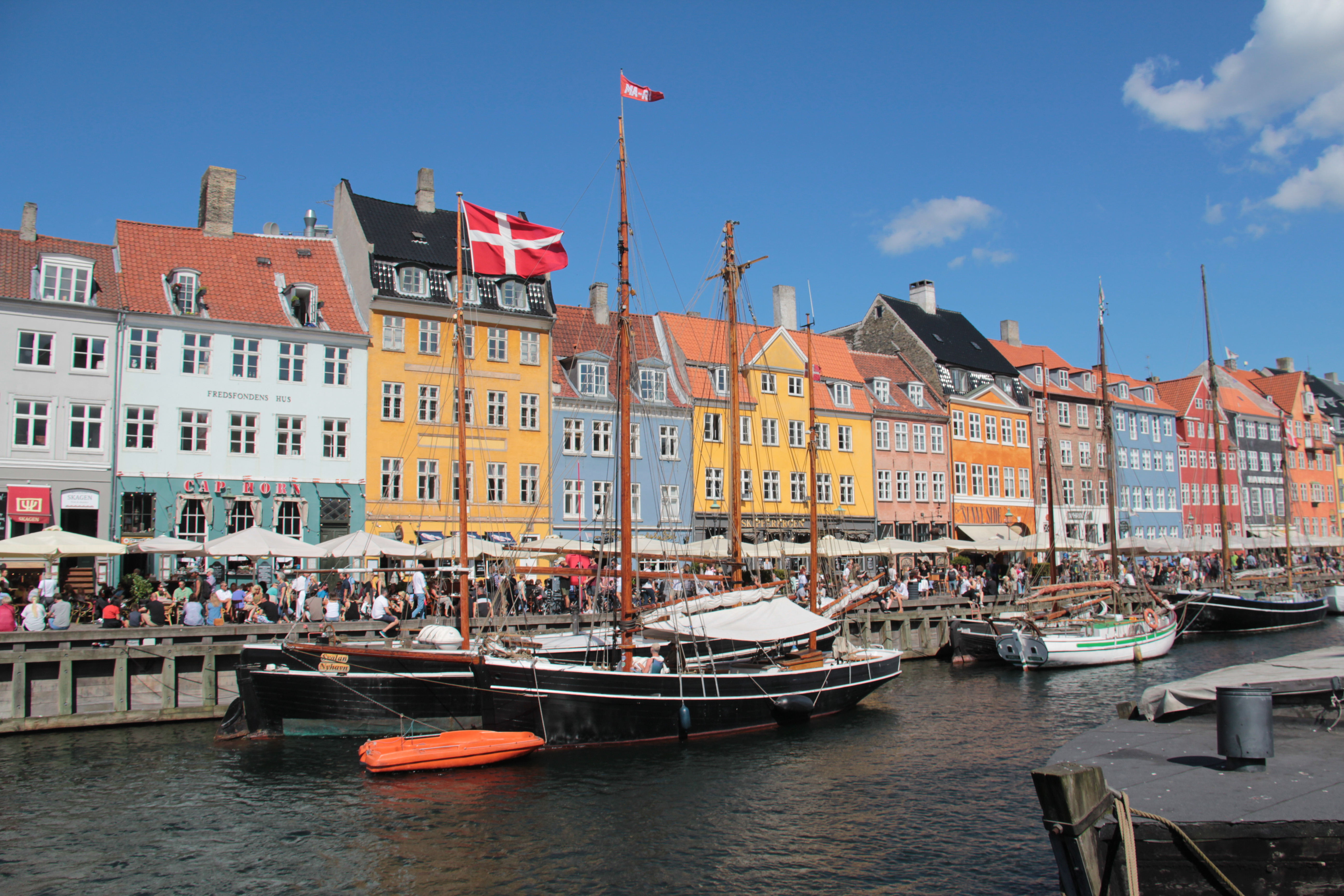
10. **Denmark’s Royal Fleet: From “Great Crown” to Eco-Luxury**The Danish royal fleet offers an intriguing study in the careful balance between preserving time-honored traditions and embracing the cutting edge of modern sustainability. At the heart of its ceremonial grandeur is the magnificent 1958 Rolls-Royce Silver Wraith, affectionately known as “Store Krone” or “Great Crown.” This seven-seater limousine, with its stately presence and historical gravitas, remains the quintessential symbol of Danish royal continuity, reserved for the most significant public events, adding an indelible layer of solemnity and prestige.
Beyond the majestic “Great Crown,” the royal household maintains other traditional vehicles, such as the Daimler DS420 eight-seater limousines, which further emphasize the enduring legacy of classical automotive design in state ceremonies. These vehicles embody an era where craftsmanship and presence were paramount, making every royal procession a living tableau of history and elegance.
Yet, the Danish royal fleet is far from static, showcasing a progressive adoption of twenty-first-century innovations. It has notably embraced eco-friendly transport, integrating vehicles like the Tesla Model S. More recently, the acquisition of seven eco-friendly cars, including the Volkswagen ID.3, affectionately referred to as “Crown 18” for the King’s personal use and practical tasks, signals a clear commitment to environmental responsibility. Two Audi A8 L 60 TFSI e quattro hybrid variants, bearing the plates Crown 9 and 10, further demonstrate this forward-thinking approach for transporting members of the royal household.
This vibrant blend of the venerable and the very modern perfectly illustrates Denmark’s unique identity—a kingdom deeply respectful of its past, yet resolutely focused on a sustainable future. The juxtaposition of a 1958 Rolls-Royce alongside electric and hybrid vehicles paints a compelling picture of a monarchy gracefully navigating the complexities of tradition and progress, demonstrating that true power lies in adaptability and foresight.
Car Model Information: 2019 Volkswagen Atlas 3.6L SE
Name: Rolls-Royce Silver Wraith
Caption: Hooper (coachbuilder)
Manufacturer: Rolls-Royce Limited
Predecessor: Rolls-Royce Wraith (1938)
Successor: Rolls-Royce Silver Cloud
Production: 1946–1958,1.883 produced (incl. 639 LWB cars)
Related: Rolls-Royce Silver Dawn
Class: Full-size car,luxury car
BodyStyle: Mostly 4-door saloons, but other body styles were erected on this chassis.
Layout: Front-engine, rear-wheel-drive layout
Engine: 4.3 L
Abbr: Straight-six engine
Transmission: Manual transmission,Hydramatic
Wheelbase: 3225.8 mm (127 in) (1946–1953),3378.2 mm (133 in) (1951–1958)
Assembly: Crewe, Cheshire,England
Categories: 1950s cars, All Wikipedia articles written in British English, Articles with short description, CS1 errors: external links, Cars discontinued in 1958
Summary: The Rolls-Royce Silver Wraith was the first post-war Rolls-Royce. It was made from 1946 to 1958 as only a chassis at the company’s Crewe factory, its former Merlin engine plant, alongside the shorter Bentley Mark VI. The Bentley was also available as a chassis for coachbuilders, but for the first time could be bought with a Rolls-Royce built Standard Steel body. The use of the name “wraith” coincided with the established tradition of naming models after “ghosts”.
It was announced by Rolls-Royce in April 1946 as the 25/30 hp replacement for the 1939 Wraith in what had been their 20 hp and 20/25 hp market sector, that is to say Rolls-Royce’s smaller car. The size was chosen to be in keeping with the mood of post-war austerity. Even very limited production of the chassis of the larger car, the Phantom IV, was not resumed until 1950 and then, officially, only for Heads of State.
Improvements announced were: chromium-plated cylinder bores for the engine; a new more rigid chassis frame to go with new independent front suspension; and a new synchromesh gearbox. Chassis lubrication was now centralised.
Get more information about: Rolls-Royce Silver Wraith
Buying a high-performing used car >>>
Brand: Rolls-Royce Model: Silver Wraith
Price: $15,988 Mileage: 72,895 mi.
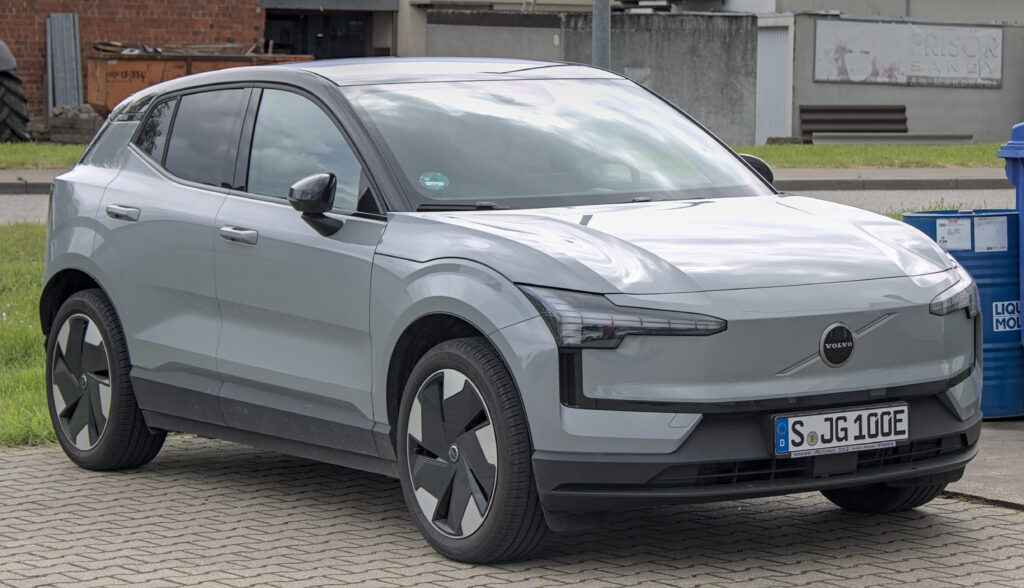
11. **East Germany’s Unexpected Luxuries: Honecker’s Western Wheels**The story of East Germany’s state cars under former Communist Party general secretary Erich Honecker presents a fascinating paradox, revealing the inherent contradictions of a socialist state grappling with the realities of luxury and international diplomacy. While the nation proudly produced its own utilitarian vehicles like the Trabant and Wartburg, these were deemed unsuitable for the rigorous demands and symbolic weight of state car usage. This created a peculiar reliance on foreign-made, often Western, luxury vehicles.
Honecker himself was famously seen traversing the streets in stretched Citroën CX and Volvo 700 Series models. These choices were particularly striking, as both French and Swedish brands represented the capitalist West, a stark ideological contrast to the very system Honecker championed. The Citroën CX, known for its distinctive design and hydropneumatic suspension, offered a level of comfort and sophistication that East German engineering simply could not match at the time.
The deployment of these Western luxury cars served a dual purpose. They projected an image of international standing and capability, essential for diplomatic engagements, while also providing the necessary reliability and comfort for a head of state. It was a pragmatic concession to the demands of modern governance, highlighting the limitations of domestic production in providing truly prestigious and advanced state vehicles.
This historical footnote in East German state transport offers a compelling narrative of adaptation and compromise. It underscores how even in a ideologically rigid society, the practicalities of power and the desire for a certain standard of representation could lead to unexpected and visually intriguing automotive choices, making these vehicles silent witnesses to a complex political landscape.
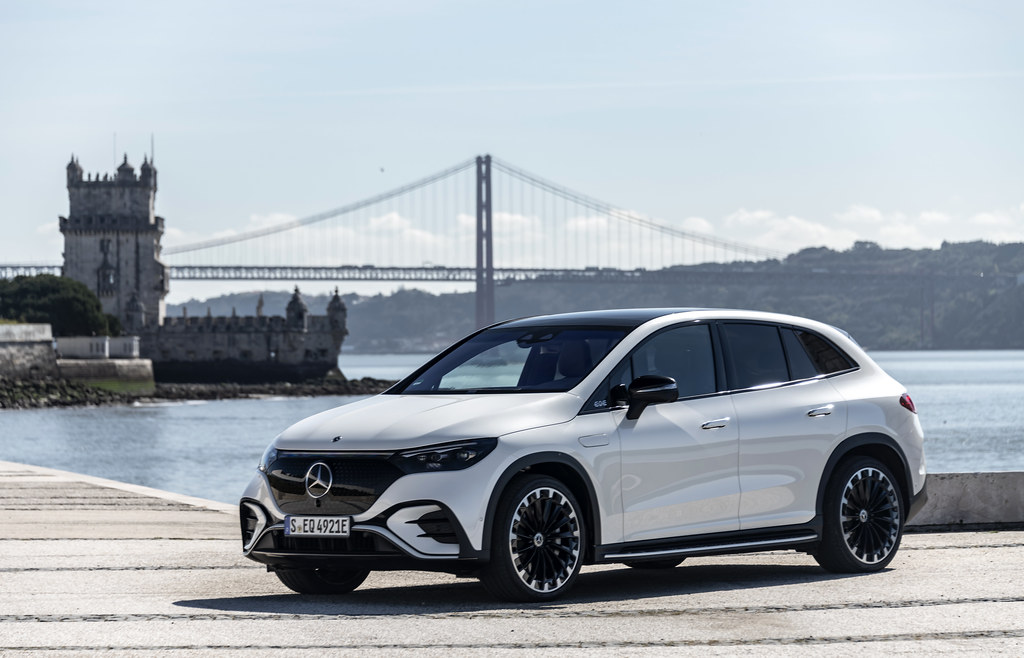
12. **Egypt’s Presidential S-Class: A Survivor’s Tale**In the realm of state transport, a vehicle’s ability to protect its passenger is often its most defining, and sometimes most dramatic, feature. Egypt’s presidential fleet, currently spearheaded by a black armored variant of the 2013 Mercedes-Benz S-Class, exemplifies this dedication to paramount security. This formidable machine, adorned with a distinctive black number plate featuring the presidential crest above an Arabic ‘1,’ is a mobile fortress designed to safeguard the nation’s leader, President Abdel Fattah el-Sisi, through any challenge.
However, the story of Egypt’s presidential Mercedes-Benz vehicles holds a particularly gripping chapter, extending back to the tenure of former leader Hosni Mubarak. Before the current model, Mubarak himself utilized a black armored 1998 Mercedes-Benz S-Class until February 2011, a testament to the enduring trust placed in the German marque for presidential protection.
What truly elevates this particular Mercedes-Benz S-Class into the annals of history is its life-saving intervention. In a harrowing incident in Ethiopia in 1995, an earlier model of this very vehicle “helped save his life.” This moment transformed the car from a mere mode of transport into an active participant in history, a silent hero credited with preserving a head of state’s life amidst a violent attack. Such an event underscores the immense, often unseen, engineering prowess packed into these armored marvels.
This narrative beautifully illustrates the critical role of advanced security in dignitary transport. Egypt’s presidential Mercedes-Benz cars are not merely luxurious conveyances; they are meticulously engineered survival pods, designed to absorb the unthinkable. Their history is interwoven with moments of high drama and national significance, making them truly unforgettable machines in the global tapestry of state carriages.
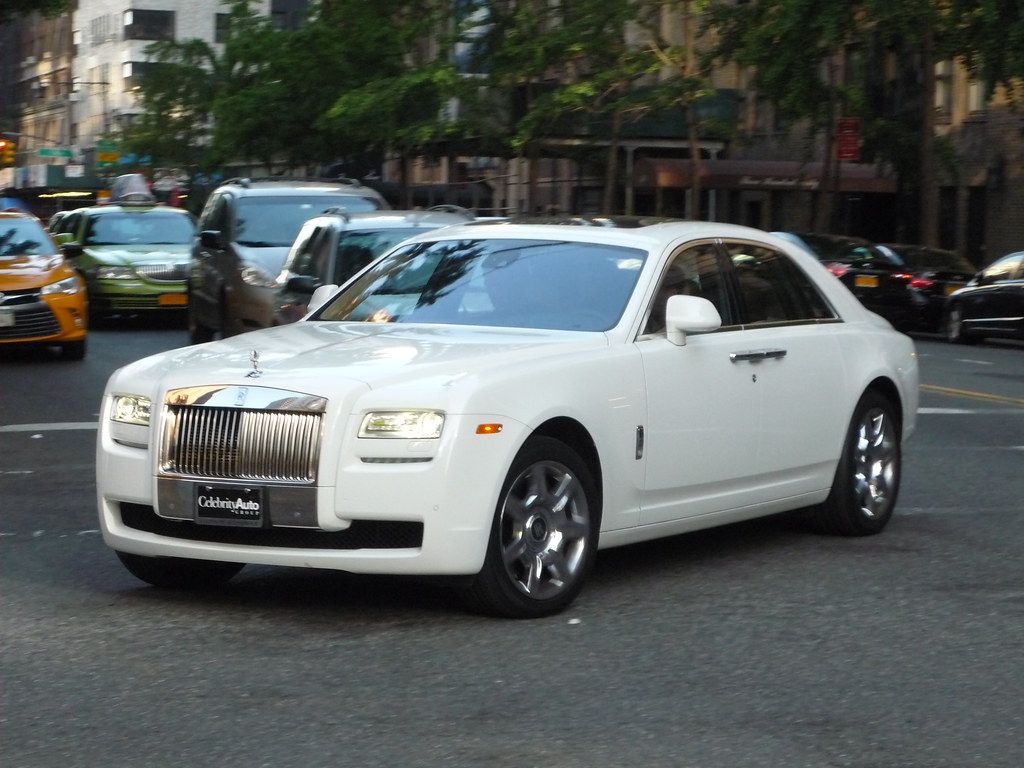
13. **Eswatini’s Royal Opulence: King Mswati III’s Rolls-Royces**The Kingdom of Eswatini, under King Mswati III, provides a striking illustration of royal opulence in the modern era, where state transport transcends mere functionality to become a grand display of monarchical wealth and status. At the forefront of this impressive collection is the regal Rolls-Royce Ghost, a vehicle synonymous with ultimate luxury and exclusive craftsmanship. Its presence alone signals an unparalleled commitment to prestige and a profound appreciation for automotive artistry.
What truly sets Eswatini’s royal fleet apart, however, is a detail that speaks volumes about the King’s personal patronage. It is noted that King Mswati III “also bought a fleet consisting of Rolls Royces and many BMWS to his 15 wives.” This extraordinary acquisition of multiple ultra-luxury vehicles for the royal family paints a vivid picture of a unique blend of personal desire and state symbolism. Such a collection is an uncommon sight globally, highlighting a distinct aspect of Eswatini’s royal traditions and economic realities.
This lavish array of vehicles is far more than just transportation; it is a visible manifestation of royal authority and the extensive resources at the monarch’s disposal. Each Rolls-Royce and BMW acts as a testament to the sovereign’s power and the perceived need to maintain a level of splendor befitting a king and his extensive family. It is a spectacle that captures the imagination, offering a glimpse into a world where luxury knows few bounds.
The state carriages of Eswatini, particularly this remarkable multi-vehicle acquisition, therefore stand as fascinating cultural artifacts. They tell a story not just of movement, but of status, tradition, and an uninhibited display of royal prerogative, making them an undeniably peculiar and compelling entry in the chronicles of dignitary transport.
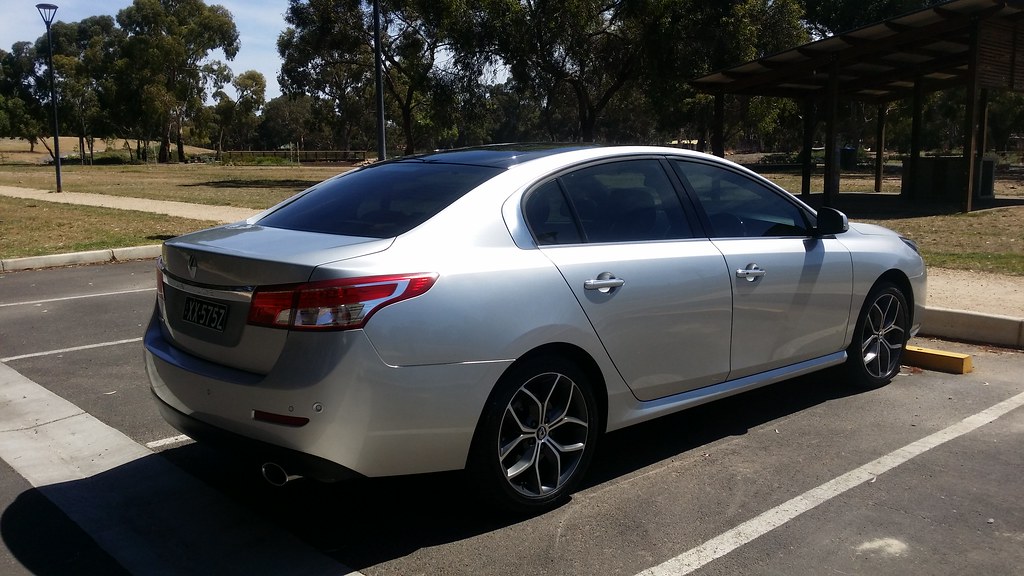
14. **France’s Presidential Parade: Innovation, Tradition, and Diversity**France, a nation celebrated for its automotive innovation and design flair, presents a presidential fleet that is a vibrant tapestry of tradition, modern security, and national pride. Under President Emmanuel Macron, the fleet includes the stylish Renault Rafale and DS 7 Crossback for investitures, proudly showcasing contemporary French engineering. These choices highlight a strong commitment to domestic brands, reinforcing a sense of national identity with every official journey.
For grand ceremonial occasions, the French presidency draws upon a rich history of bespoke vehicles. The open-top Citroën SM Présidentielle models and the unique DS N°8 stand out as emblems of French design audacity. These vehicles, often seen in parades, allow the President to connect directly with the populace, combining sophisticated engineering with an air of traditional pageantry, transforming state movements into public spectacles.
Beyond the celebratory vehicles, the daily operational fleet demonstrates a pragmatic approach to security and utility. Armored Peugeot 5008 and Renault Espace models provide robust and secure transport for routine engagements, reflecting the paramount importance of presidential safety in a modern world. Additionally, the ACMAT military command car is employed for parades, adding a layer of rugged authority and military precision to state events.
This impressive diversity, ranging from elegant limousines to rugged military vehicles and custom parade cars, underscores France’s multifaceted approach to dignitary transport. It’s a fleet that skillfully balances the demands of security, the allure of national automotive heritage, and the necessity of public engagement, making each journey a statement about the enduring legacy and evolving nature of French power.
As our journey through the world’s most compelling state carriages concludes, we are left with a profound appreciation for these remarkable machines. They are more than just cars; they are meticulously crafted narratives, moving canvases upon which nations paint their histories, express their values, and project their power. From ancient horse-drawn traditions to hyper-armored modern marvels and unexpected personal choices, each vehicle tells a unique story of leadership, security, and the enduring human fascination with movement. These carriages, in their varied forms, truly embody the fascinating, often hidden, threads that weave through the fabric of global statecraft, continuously evolving, yet forever etched in the annals of time.



